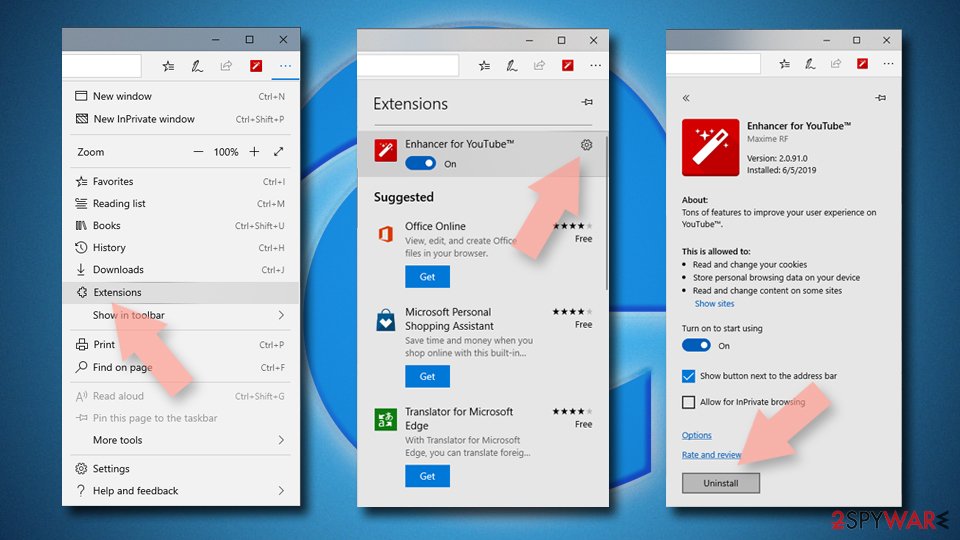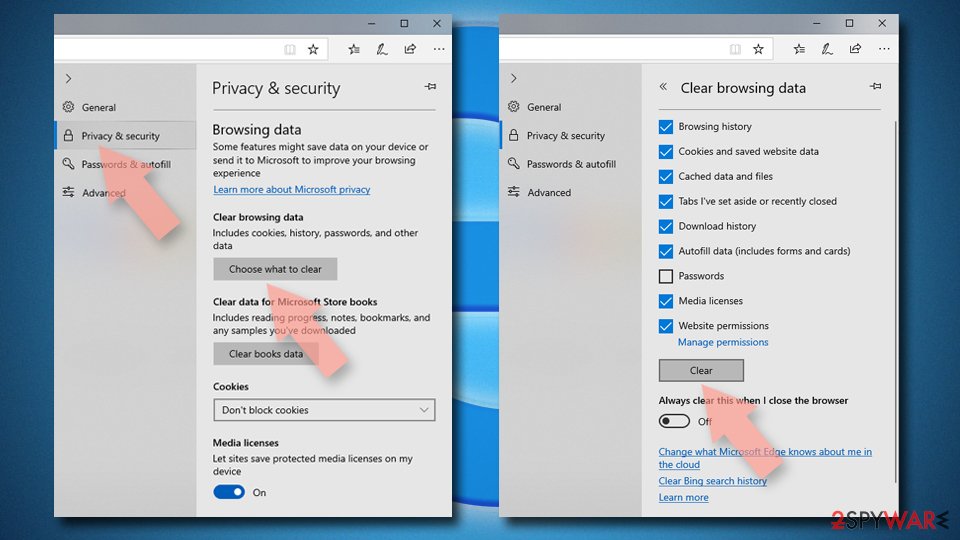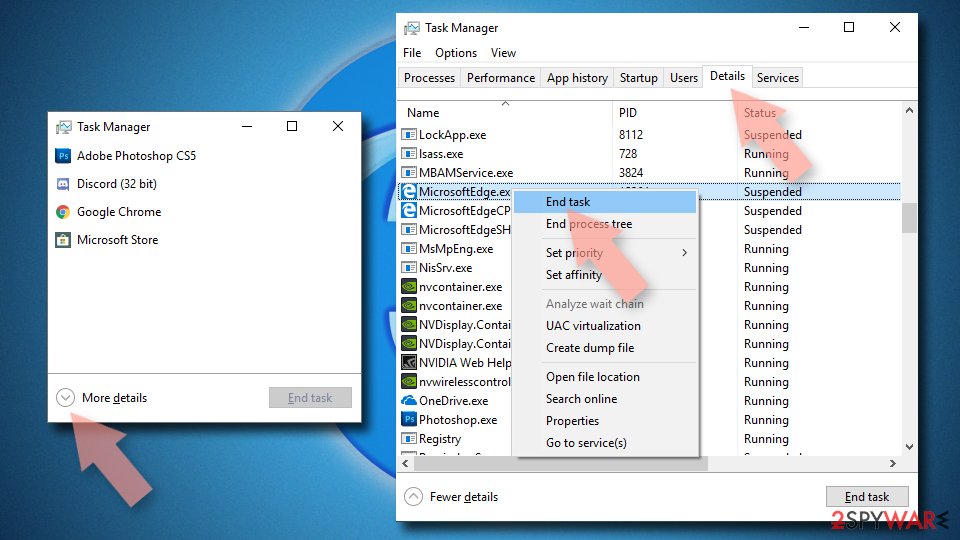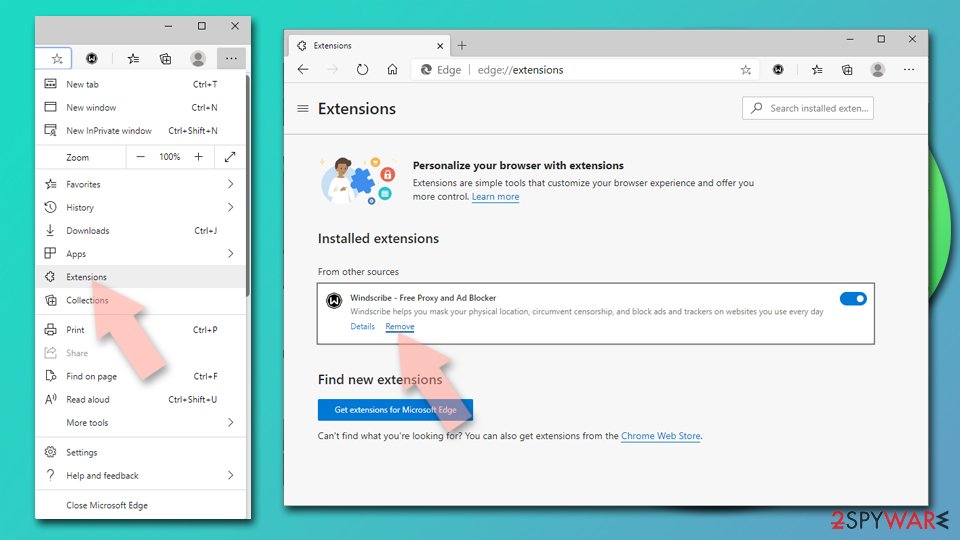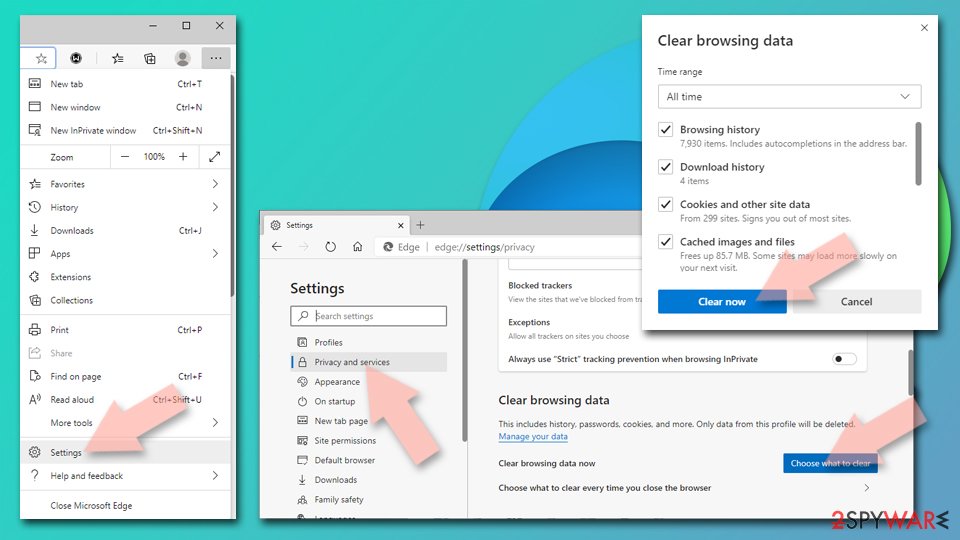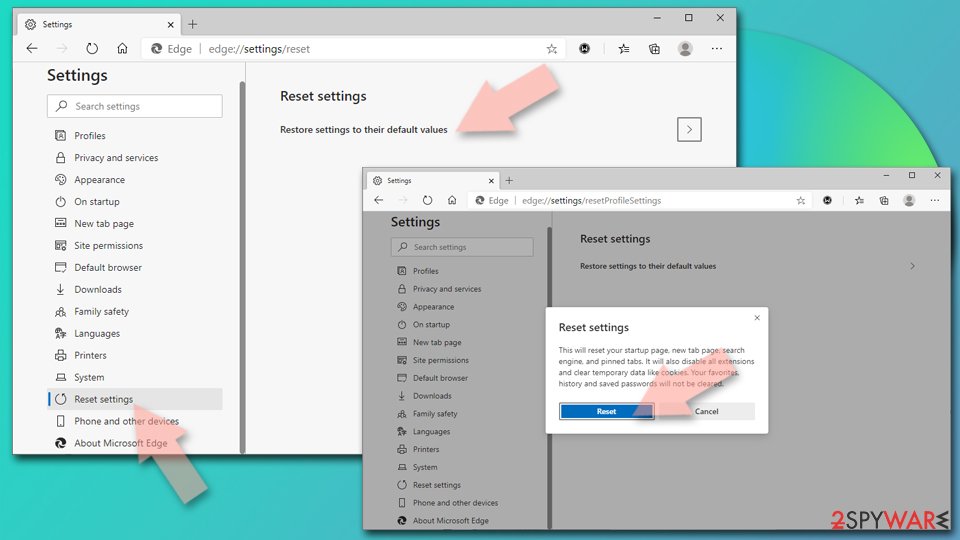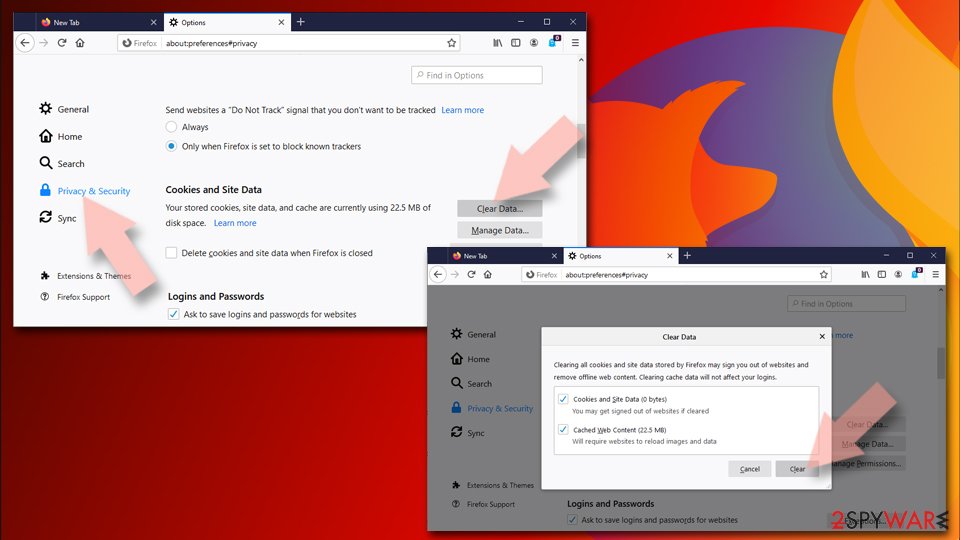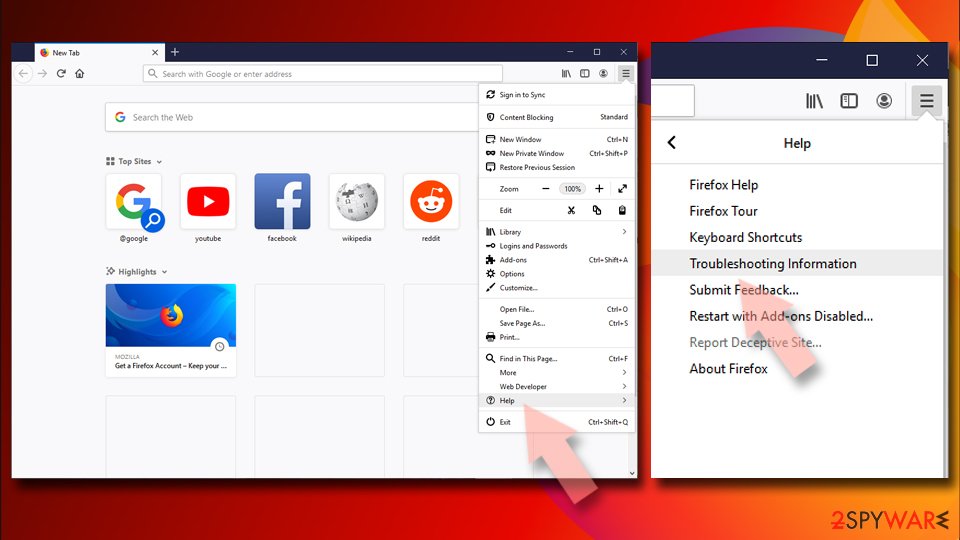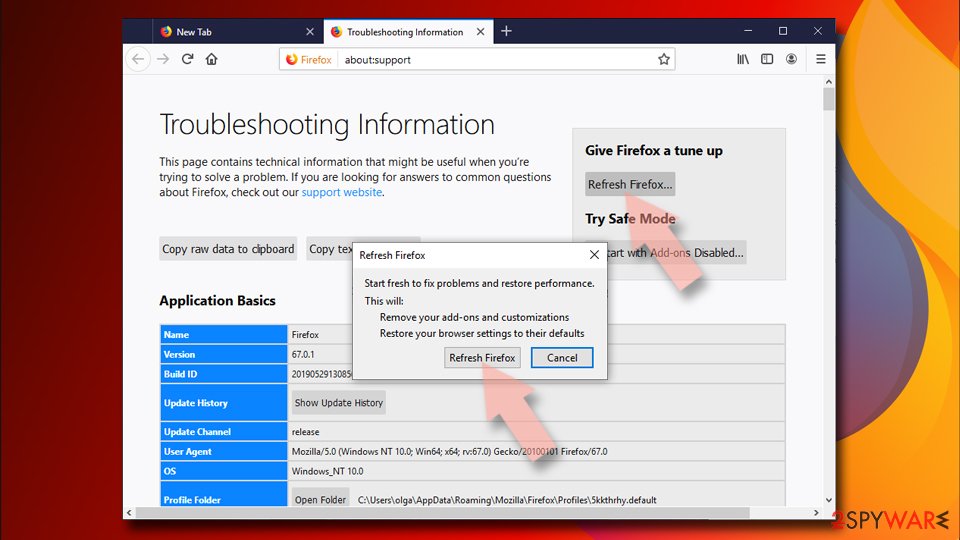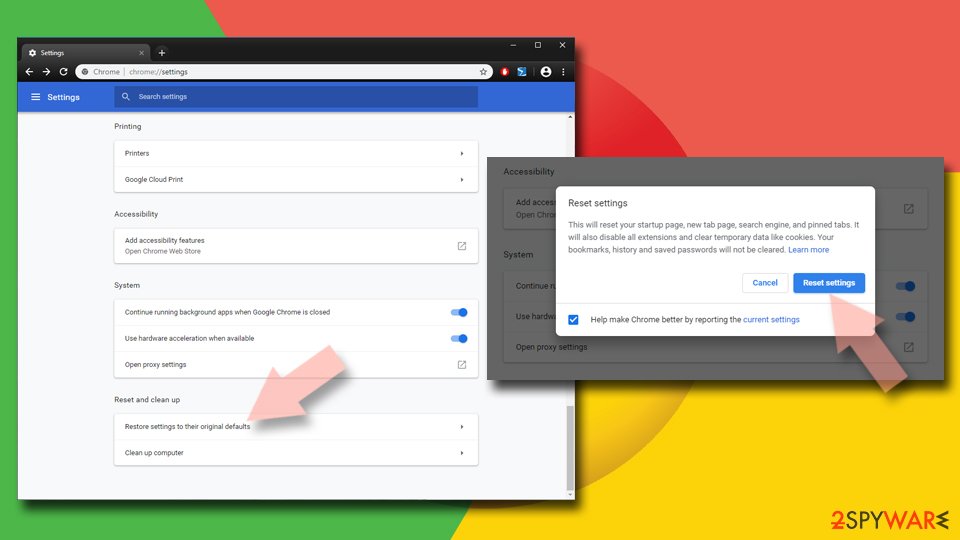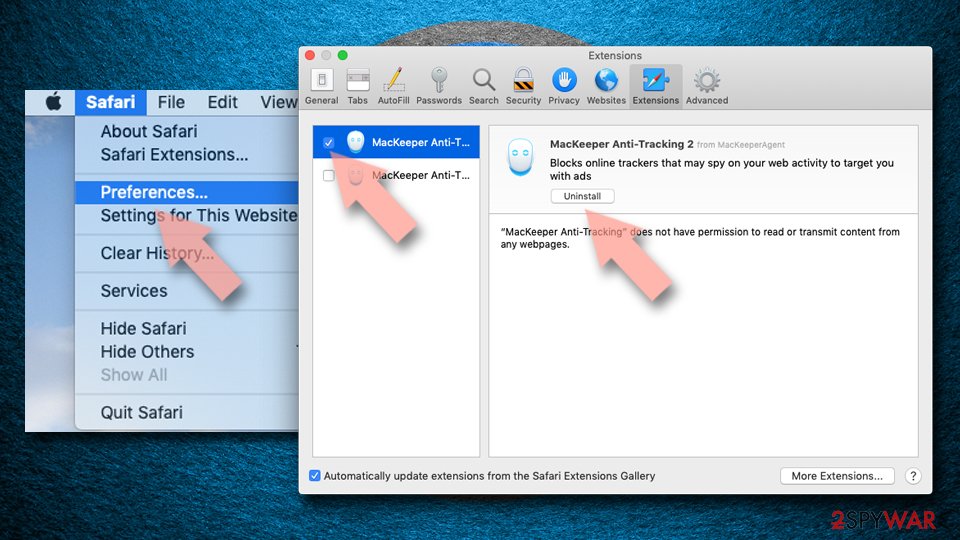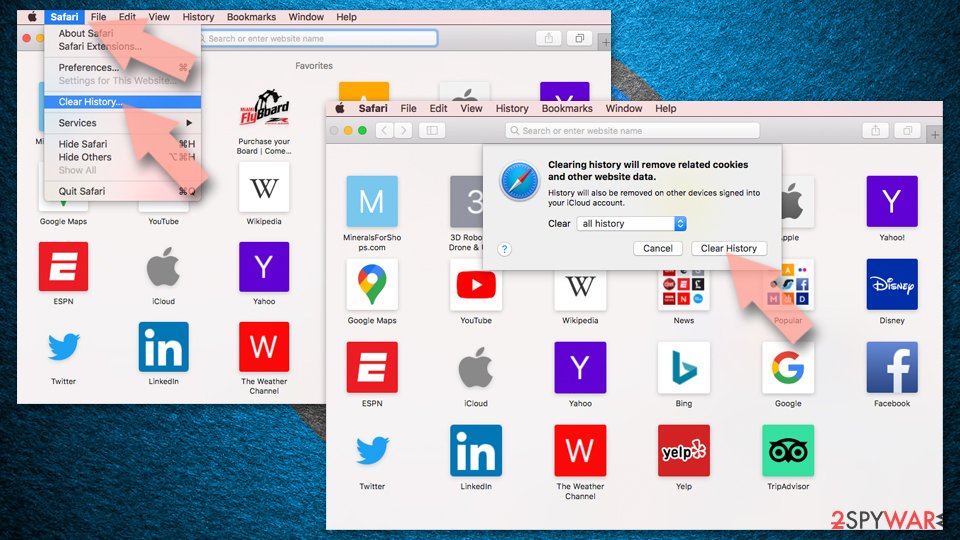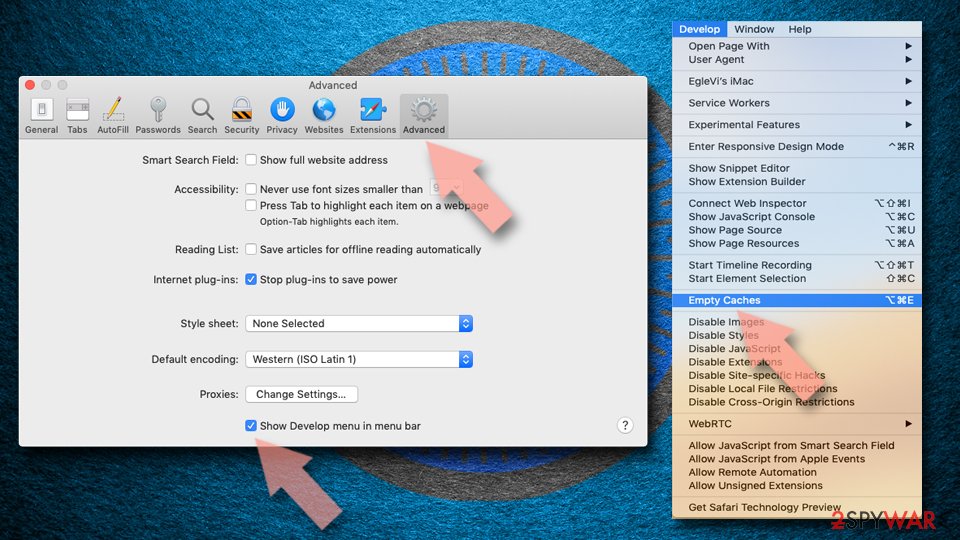Nonereblock ads (Tutorial) - Removal Instructions
Nonereblock ads Removal Guide
What is Nonereblock ads?
Why do I see Nonereblock ads all the time?
Nonereblock virus attempts to fool computer users by advertising itself as an advantageous tool that helps to access geo-restricted websites, enhances browsing experience and improves user’s freedom by helping to “bypass web filtering to surf the web safely and privately without limits or restrictions.” However, we suggest you stay away from this suspicious tool because it is very hard to remove Nonereblock as soon as it roots into browser’s settings. In fact, the entire functionality of this adware reminds us of such infamous software like DNS Unlocker[1] or DNS Blocker.

It appears that Nonereblock adware[2] delivers third-party advertisements for the user as long as it browses the Internet with this software installed on the system. It acknowledges the user of cookies and web beacons that third-party advertisers may inject into user’s browsers during his/hers browsing sessions, and lets the user know that Nonereblock service “allows indirect browsing of third-party websites.” If you notice suspicious pop-up ads, banners, and other forms of advertising appearing on your computer screen, and if they annoy you already, better bypass them and start reading Nonereblock removal instructions provided below this post. We have to warn you that despite this adware claims it doesn’t install anything on the system, your browser’s proxy[3] settings cannot change themselves on their own, which means there is a program on your computer that is responsible for that. We strongly recommend you to run anti-malware[4] software to delete this program and files related to it, and not click on ads it produces because they might be dangerous and throw you onto hazardous web pages that can compromise your PC by installing spyware/malware programs. For the removal process, we strongly recommend using FortectIntego or SpyHunter 5Combo Cleaner software.
How could I install several suspicious programs without realizing it?
Suspicious programs that display ads or change your browser’s settings without notifying you to tend to spread via software bundles, and this way they manage to enter victim’s computer system unnoticed. Once installed, they get access to user’s computer system and configure certain settings however they need them to be. If you want to avoid Nonereblock hijack, better install new software safely, and do not forget that program’s download source plays an important role, too. You can even download legitimate programs with some suspicious files bundled with them if you choose an untrustworthy Internet source to download them from. Once you’ve downloaded the program, install it using Advanced or Custom settings[5] and make sure you opt-out all shady-looking additional components suggested for you.
How to remove Nonereblock software?
The guide that is given below will guide you through the Nonereblock removal process. Please follow it carefully – it is very important to delete this software properly and not leave any components of it, otherwise, your computer will continue to function suspiciously and load ads from various ad networks. To remove Nonereblock virus, follow steps provided below.
You may remove virus damage with a help of FortectIntego. SpyHunter 5Combo Cleaner and Malwarebytes are recommended to detect potentially unwanted programs and viruses with all their files and registry entries that are related to them.
Getting rid of Nonereblock ads. Follow these steps
Uninstall from Windows
To delete Nonereblock virus, please follow steps provided in this tutorial carefully. First of all, delete all suspicious programs from PC using these instructions.
Instructions for Windows 10/8 machines:
- Enter Control Panel into Windows search box and hit Enter or click on the search result.
- Under Programs, select Uninstall a program.

- From the list, find the entry of the suspicious program.
- Right-click on the application and select Uninstall.
- If User Account Control shows up, click Yes.
- Wait till uninstallation process is complete and click OK.

If you are Windows 7/XP user, proceed with the following instructions:
- Click on Windows Start > Control Panel located on the right pane (if you are Windows XP user, click on Add/Remove Programs).
- In Control Panel, select Programs > Uninstall a program.

- Pick the unwanted application by clicking on it once.
- At the top, click Uninstall/Change.
- In the confirmation prompt, pick Yes.
- Click OK once the removal process is finished.
Delete from macOS
Remove all questionable applications you can find on your Mac using these instructions.
Remove items from Applications folder:
- From the menu bar, select Go > Applications.
- In the Applications folder, look for all related entries.
- Click on the app and drag it to Trash (or right-click and pick Move to Trash)

To fully remove an unwanted app, you need to access Application Support, LaunchAgents, and LaunchDaemons folders and delete relevant files:
- Select Go > Go to Folder.
- Enter /Library/Application Support and click Go or press Enter.
- In the Application Support folder, look for any dubious entries and then delete them.
- Now enter /Library/LaunchAgents and /Library/LaunchDaemons folders the same way and terminate all the related .plist files.

Remove from Microsoft Edge
Delete unwanted extensions from MS Edge:
- Select Menu (three horizontal dots at the top-right of the browser window) and pick Extensions.
- From the list, pick the extension and click on the Gear icon.
- Click on Uninstall at the bottom.

Clear cookies and other browser data:
- Click on the Menu (three horizontal dots at the top-right of the browser window) and select Privacy & security.
- Under Clear browsing data, pick Choose what to clear.
- Select everything (apart from passwords, although you might want to include Media licenses as well, if applicable) and click on Clear.

Restore new tab and homepage settings:
- Click the menu icon and choose Settings.
- Then find On startup section.
- Click Disable if you found any suspicious domain.
Reset MS Edge if the above steps did not work:
- Press on Ctrl + Shift + Esc to open Task Manager.
- Click on More details arrow at the bottom of the window.
- Select Details tab.
- Now scroll down and locate every entry with Microsoft Edge name in it. Right-click on each of them and select End Task to stop MS Edge from running.

If this solution failed to help you, you need to use an advanced Edge reset method. Note that you need to backup your data before proceeding.
- Find the following folder on your computer: C:\\Users\\%username%\\AppData\\Local\\Packages\\Microsoft.MicrosoftEdge_8wekyb3d8bbwe.
- Press Ctrl + A on your keyboard to select all folders.
- Right-click on them and pick Delete

- Now right-click on the Start button and pick Windows PowerShell (Admin).
- When the new window opens, copy and paste the following command, and then press Enter:
Get-AppXPackage -AllUsers -Name Microsoft.MicrosoftEdge | Foreach {Add-AppxPackage -DisableDevelopmentMode -Register “$($_.InstallLocation)\\AppXManifest.xml” -Verbose

Instructions for Chromium-based Edge
Delete extensions from MS Edge (Chromium):
- Open Edge and click select Settings > Extensions.
- Delete unwanted extensions by clicking Remove.

Clear cache and site data:
- Click on Menu and go to Settings.
- Select Privacy, search and services.
- Under Clear browsing data, pick Choose what to clear.
- Under Time range, pick All time.
- Select Clear now.

Reset Chromium-based MS Edge:
- Click on Menu and select Settings.
- On the left side, pick Reset settings.
- Select Restore settings to their default values.
- Confirm with Reset.

Remove from Mozilla Firefox (FF)
First of all, delete all suspicious add-ons using instructions with pictures (provided below). You will also need to open Firefox settings, go to Preferences(or Options) tab > Advanced > Network. Here, click on Settings… button. At the bottom of a settings window that appears, you will see Automatic proxy configuration URL. Delete the URL that is there, and then choose Use System Proxy Settings option. Click OK to save. If the problem persists, refresh Firefox.
Remove dangerous extensions:
- Open Mozilla Firefox browser and click on the Menu (three horizontal lines at the top-right of the window).
- Select Add-ons.
- In here, select unwanted plugin and click Remove.

Reset the homepage:
- Click three horizontal lines at the top right corner to open the menu.
- Choose Options.
- Under Home options, enter your preferred site that will open every time you newly open the Mozilla Firefox.
Clear cookies and site data:
- Click Menu and pick Settings.
- Go to Privacy & Security section.
- Scroll down to locate Cookies and Site Data.
- Click on Clear Data…
- Select Cookies and Site Data, as well as Cached Web Content and press Clear.

Reset Mozilla Firefox
If clearing the browser as explained above did not help, reset Mozilla Firefox:
- Open Mozilla Firefox browser and click the Menu.
- Go to Help and then choose Troubleshooting Information.

- Under Give Firefox a tune up section, click on Refresh Firefox…
- Once the pop-up shows up, confirm the action by pressing on Refresh Firefox.

Remove from Google Chrome
Delete malicious extensions from Google Chrome:
- Open Google Chrome, click on the Menu (three vertical dots at the top-right corner) and select More tools > Extensions.
- In the newly opened window, you will see all the installed extensions. Uninstall all the suspicious plugins that might be related to the unwanted program by clicking Remove.

Clear cache and web data from Chrome:
- Click on Menu and pick Settings.
- Under Privacy and security, select Clear browsing data.
- Select Browsing history, Cookies and other site data, as well as Cached images and files.
- Click Clear data.

Change your homepage:
- Click menu and choose Settings.
- Look for a suspicious site in the On startup section.
- Click on Open a specific or set of pages and click on three dots to find the Remove option.
Reset Google Chrome:
If the previous methods did not help you, reset Google Chrome to eliminate all the unwanted components:
- Click on Menu and select Settings.
- In the Settings, scroll down and click Advanced.
- Scroll down and locate Reset and clean up section.
- Now click Restore settings to their original defaults.
- Confirm with Reset settings.

Delete from Safari
Remove unwanted extensions from Safari:
- Click Safari > Preferences…
- In the new window, pick Extensions.
- Select the unwanted extension and select Uninstall.

Clear cookies and other website data from Safari:
- Click Safari > Clear History…
- From the drop-down menu under Clear, pick all history.
- Confirm with Clear History.

Reset Safari if the above-mentioned steps did not help you:
- Click Safari > Preferences…
- Go to Advanced tab.
- Tick the Show Develop menu in menu bar.
- From the menu bar, click Develop, and then select Empty Caches.

After uninstalling this potentially unwanted program (PUP) and fixing each of your web browsers, we recommend you to scan your PC system with a reputable anti-spyware. This will help you to get rid of Nonereblock registry traces and will also identify related parasites or possible malware infections on your computer. For that you can use our top-rated malware remover: FortectIntego, SpyHunter 5Combo Cleaner or Malwarebytes.
How to prevent from getting adware
Do not let government spy on you
The government has many issues in regards to tracking users' data and spying on citizens, so you should take this into consideration and learn more about shady information gathering practices. Avoid any unwanted government tracking or spying by going totally anonymous on the internet.
You can choose a different location when you go online and access any material you want without particular content restrictions. You can easily enjoy internet connection without any risks of being hacked by using Private Internet Access VPN.
Control the information that can be accessed by government any other unwanted party and surf online without being spied on. Even if you are not involved in illegal activities or trust your selection of services, platforms, be suspicious for your own security and take precautionary measures by using the VPN service.
Backup files for the later use, in case of the malware attack
Computer users can suffer from data losses due to cyber infections or their own faulty doings. Ransomware can encrypt and hold files hostage, while unforeseen power cuts might cause a loss of important documents. If you have proper up-to-date backups, you can easily recover after such an incident and get back to work. It is also equally important to update backups on a regular basis so that the newest information remains intact – you can set this process to be performed automatically.
When you have the previous version of every important document or project you can avoid frustration and breakdowns. It comes in handy when malware strikes out of nowhere. Use Data Recovery Pro for the data restoration process.
- ^ DNS Unlocker virus renewed its activities. VirusActivity Blog. News about Computer Viruses.
- ^ The Dangers of Spyware and Adware. McAfee. Security Advice Center.
- ^ What are proxy settings?. BBC WebWise. Discover Media and Technology.
- ^ Lucia Danes. Malware removal tools. NoVirus. Cybersecurity News and Virus Removal Guides.
- ^ Wendy Zamora. How to avoid potentially unwanted programs. Official Malwarebytes Security Blog. Information about Cybersecurity.





